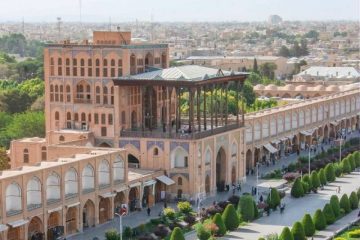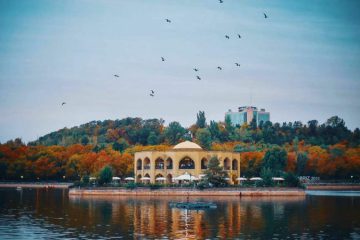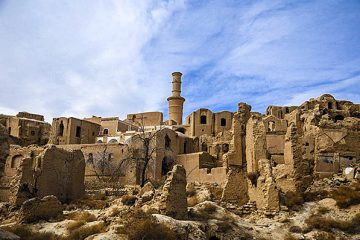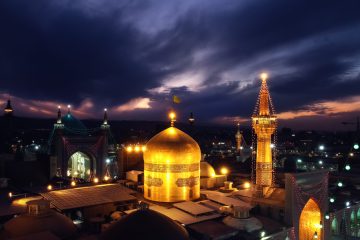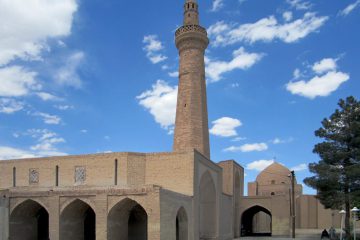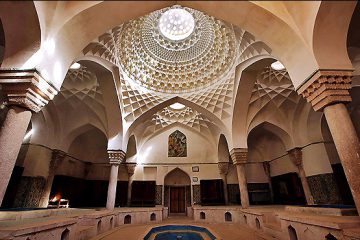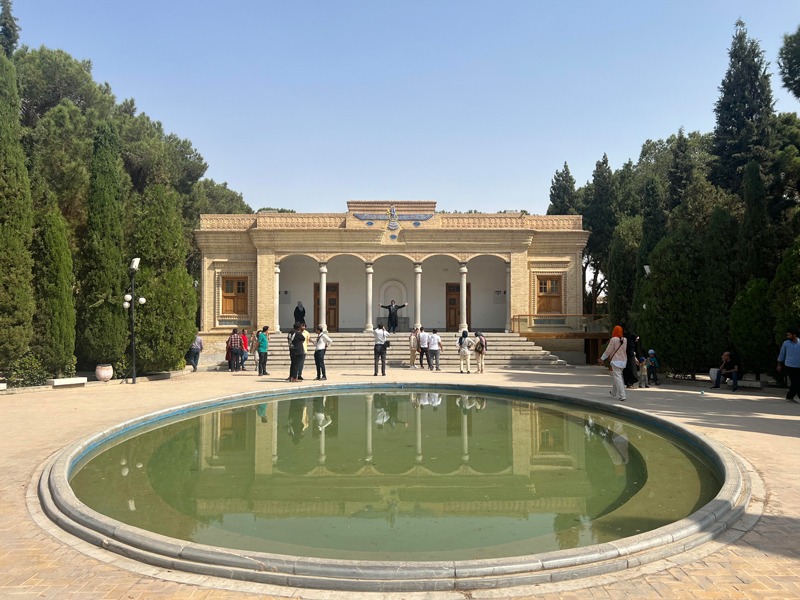
Zoroastrian Fire Temple in Yazd
Yazd is renowned for its harmonious blend of religions, evident in its diverse religious buildings. At the city center, the Zoroastrian Fire Temple stands prominently, while just a few streets away, you’ll find the Yazd Grand Mosque.
Today, we invite you to explore one of Yazd’s notable Zoroastrian religious sites. Hardly anyone visits Yazd without inquiring about the location of this fire temple. Fortunately, the doors of this place are open to all, allowing the public to experience the fire temple firsthand. It’s a gesture by the Zoroastrian community to share their culture with others.
Let’s explore why the Zoroastrian Fire Temple is a top choice among tourists!
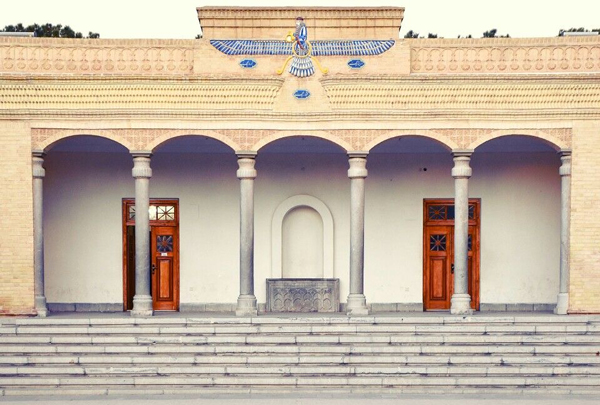
Firstly, it holds significant importance among Zoroastrian structures in Iran. Secondly, boasting a history of over 1500 years, it stands as a testament to ancient traditions. Thirdly, it ranks among Yazd’s top attractions, offering visitors insight into Zoroastrian customs through its exhibitions. Lastly, it exudes a serene and calming atmosphere, enhancing the visitor experience.
Introduction to Zoroastrian Fire Temple
The Zoroastrian Fire Temple in Yazd is a significant Zoroastrian shrine where fire holds special significance. Here, important religious rituals, including the recitation of the Avesta and Gathas, are conducted in front of the sacred fire.
Constructed during the first Pahlavi dynasty, the Yazd Varham Fire Temple, also known as the Fire Temple of Verheram, is highly revered among Zoroastrians. It houses the sacred fire of Varheram, a topic we’ll delve into shortly.
Since the 1960s, the temple has welcomed visitors, and it was officially recognized as part of Iran’s National Heritage List on September 13, 1999.
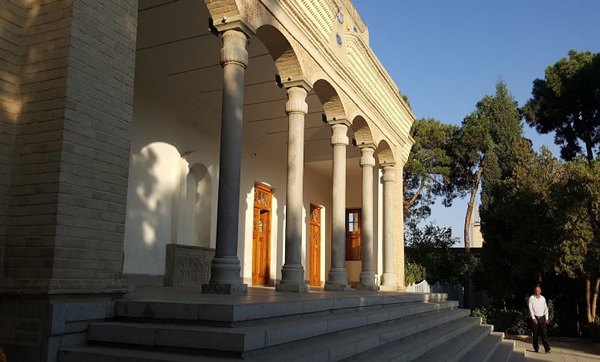
The Yazd Zoroastrian Fire Temple’s Architecture
Upon entering the Yazd Fire Temple, your gaze is drawn to a pool directly in front of the main building. One notable feature of fire temples is the presence of water nearby, a characteristic observed in their architectural design. Traditionally, fire temples were constructed as simple yet elegant buildings, often devoid of ornamental embellishments. The Yazd Fire Temple adheres to this principle, reflecting elements of Persian fire temple architecture seen in India and the architectural style of the Achaemenids, particularly Persepolis.
The main structure of the fire temple is strategically positioned and designed to maximize sunlight exposure, ensuring ample energy retention within the building.
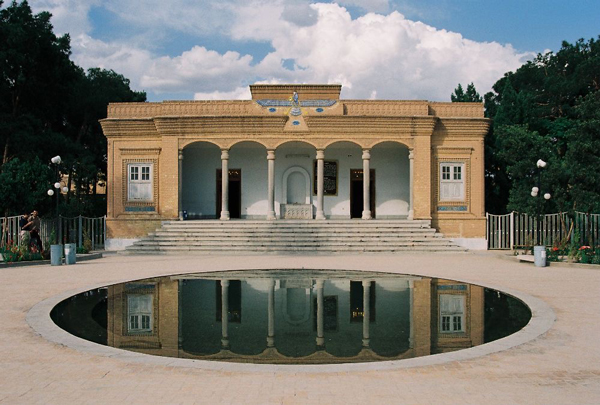
Water Sources in Zoroastrian Fire Temple
For water supply within the temple, various options were available. Among the most significant were the water reservoir and qanat. Visitors have the opportunity to explore these impressively structured facilities. Additionally, within the complex, some old bathrooms and toilets provide insight into the lifestyle of people from 80 years ago.
Yazd Zoroastrian Fire Temple: The Main Building and Courtyard
Situated in the center of the courtyard atop a 21-meter-high platform, the main building of the fire temple commands attention. Accessible via a staircase, the entrance door awaits after ascending eight steps. The courtyard, perennially verdant, features prominent cypress and pine trees. Adorning the front of the main building are stone columns, with walls embellished by intricate stone carvings. Crafted by artisans from Isfahan, these stones were meticulously cut in Isfahan before being transported to Yazd. Upon entering the building, visitors are greeted by walls adorned with depictions of Zoroaster and excerpts from the Avestan Book. Further inside lies the sacred fire.
You can explore fascinating areas and visit the following attractions At Yazd Fire Temple:
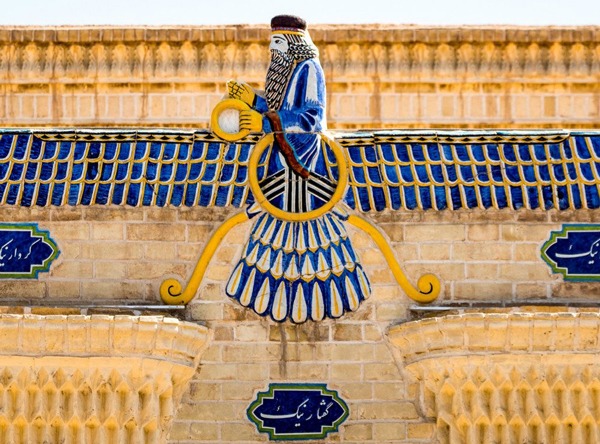
1. The Faravahar Statue Above the Entrance Of Fire Temple
At Yazd Zoroastrian Fire Temple in Iran, one of the most captivating adornments of the building is the Faravahar or Faravashi statue, prominently displayed above the entrance. Faravahar is considered one of the spiritual forces in Zoroastrianism, existing before the creation of beings. According to Zoroastrian belief, it persists after the demise of beings, ascending to the spiritual realm and remaining there eternally. This force, often interpreted as the essence of life, is immortal and everlasting. The Faravahar of every entity is present in the spiritual realm before its material manifestation and accompanies the being throughout its existence. Upon the creature’s death, its Faravahar returns to the Faravashi world. The Faravashi statue at Yazd Fire Temple is a remarkable example of Yazdi tile work, exuding exceptional elegance and beauty.
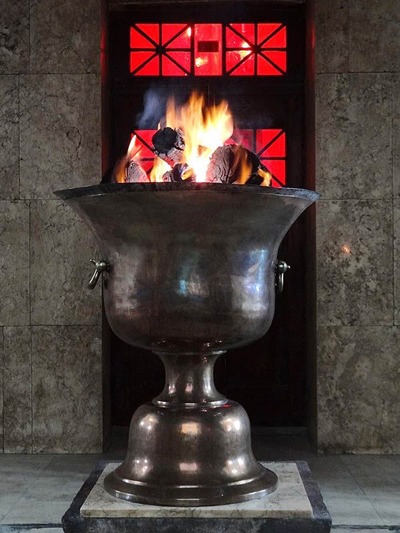
2. The Sacred Varham Fire
One of the key reasons why this temple holds immense significance for Zoroastrians is its preservation of the sacred Varham fire. This flame, over 1500 years old, holds profound sanctity for followers of Zoroaster. During the Sassanid era in Iran, three fires were revered for their ancient origins, known as the “Fires of Varhoram,” signifying the “fires of victory.” One of these esteemed fires resided in the Adur Farnbag fire temple in Kariyan, Fars Province. In the tenth century, amid foreign invasions, this fire was relocated to Yazd for safekeeping. Initially housed in the city’s grand fire temple, the structure was unfortunately destroyed around 1117.
The Sacred Flame’s Relocation from Yazd
To safeguard the sacred fire, Zoroastrians concealed it within a cave on the Ashkaft Yazdan mountain, situated between Aqda and Pars Banu. It remained hidden there for three decades until it was moved to a Zoroastrian village near Yazd. Over the next two centuries, it was continuously shifted from one village to another to prevent it from falling into the hands of invaders.
In 1348, many Zoroastrians from Yazd, including the priests, journeyed to Turkabad village near Ardakan, taking the sacred fire with them. It stayed there for 300 years. However, as the Zoroastrian community in Turkabad started to decline, they relocated the holy fire to Sharifabad.
The Holy Fire comes back to Yazd
The Holy Fire returned to Yazd around 1780, where it was secretly housed in the home of a prominent priest in the Yazd Dastaran neighborhood. In the subsequent years, a small fire temple was constructed to provide a more secure storage place for the sacred fire.
Upon Reza Shah Pahlavi’s approval for the construction of the Yazd fire temple, the location for the sacred fire was determined, and it was relocated there in April 1942.
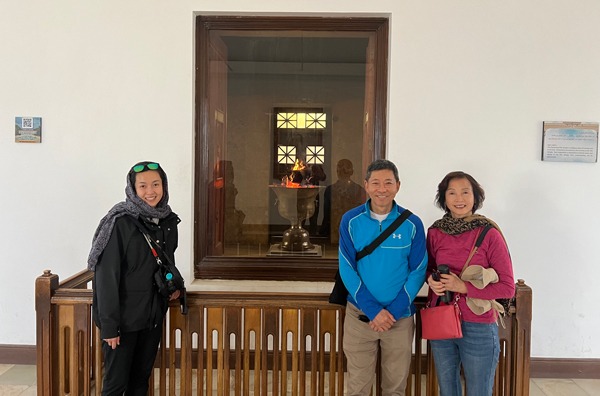
Exploring the Holy Fire at Yazd Fire Temple
At the Yazd fire temple, visitors can view the sacred fire housed in a sizable bronze container protected by a glass enclosure. Positioned above ground level, the fire resides in a spacious room shielded from direct sunlight, with worship chambers constructed around it.
At the fire temple, a designated individual known as the “Hirbod” is tasked with tending to the eternal flame. Several times a day, the Hirbod adds a piece of dry wood, typically from resilient varieties like almond or apricot, to sustain the fire. Once the wood is consumed, the remaining ash is removed from the container as needed. To preserve the sanctity of the flame, visitors can observe it through the protective glass, as direct contact with human breath is avoided. Tourists are often fascinated by the fire’s longevity and may catch a hint of its aroma while peering through the glass.
3- Varjavand Hall
In 1939, Mr. Jamshid Amanat erected a hall and a water reservoir within the Yazd Fire Temple complex as a tribute to his late wife. However, over time, the hall fell into disrepair and became unusable by 2002 due to its age. In 2008, Engineer Parviz Varjavand undertook the renovation of the hall, preserving its original style. This restoration project was carried out in honor of his parents, Dr. Fereydoun Varjavand and Dolat Rostami, and the hall was subsequently named after the Varjavand family.
Now, Varjavand Hall serves as an exhibition showcasing insights into Zoroastrianism, its traditions, and religious practices. Within the hall, visitors can explore various displays featuring mannequins, photographs, and informative panels. One section depicts a bride and groom with accompanying details, while another corner provides information about Nowruz and the associated ceremonies observed by followers of this faith. Additionally, visitors can learn about Zoroastrian prayers, religious customs, and ceremonial attire within the same hall.
4- Water Reservoir Of Yazd Fire Temple
Jamshid Amanat constructed a water reservoir within the Zoroastrian fire temple. This reservoir is now accessible on the ground floor of Varjavand Hall. Before entering the reservoir area, visitors encounter an exhibition space showcasing photographs captured by various photographers, depicting various aspects of Zoroastrianism. From Nowruz celebrations to prayers and religious customs, these photos provide insights into the faith’s practices and traditions.
You’ll find stairs leading down to the water reservoir in one corner of the exhibition hall. Previously, the staircase’s end was blocked, and visitors used a faucet at the tank’s bottom to fetch water. However, the faucet and wall have been removed, allowing tourists to enter the reservoir room for a visit. The reservoir is supplied with water from the qanat, which flows through the upper valve, providing access to visitors.
The History Of Yazd Zoroastrian Fire Temple
In 1934, Reza Khan endorsed the idea of constructing a fire temple in Yazd to provide Zoroastrians with a grand place of worship. In November of the same year, a Persian Zoroastrian named “Hamabai” selected Yazd city as the capital of Yazd province for this purpose. He designated a 6881 square meter plot of land for the temple’s construction, which was commemorated by several Iranian Zoroastrians, including the Amanat brothers, in honor of their father, Ardeshir Mehraban Rostam Amanat.
The building was designed by Persian engineers, and its construction was supervised by Jamshid Amanat, one of the Amanat brothers. According to his memoirs, Jamshid Amanat made five trips to India to obtain funding for the Varham Fire Temple in Yazd from the Association of Indian Persians, a group of Zoroastrians of Iranian descent. He traveled to India four times by steamship across the Indian Ocean and once by foot and camel from the dunes of Baluchistan, Iran, and Pakistan.
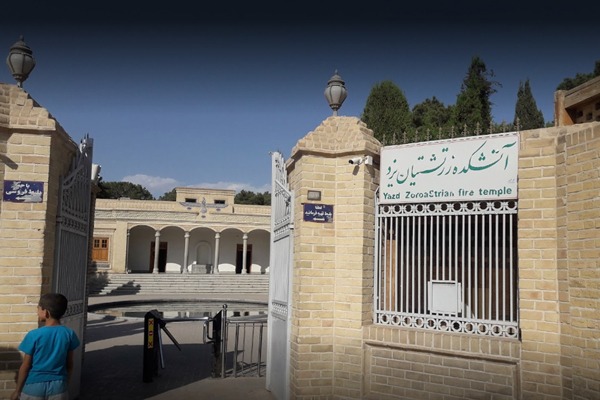
Entering The Varham Fire Temple with Etiquette
The Varham Fire Temple in Yazd holds sacred significance, and there are certain manners to observe when entering. Firstly, both men and women should ensure they are clean before entering the temple. Secondly, akin to the sanctity of a mosque among Muslims, women who are menstruating should refrain from entering. Thirdly, Zoroastrian men traditionally wear white hats upon entering, while women wear white scarves along with light-colored clothing, and it’s customary for all visitors to remove their shoes. Lastly, it’s important to maintain a respectful distance from the sacred fire, as human breath is believed to pollute its sanctity.
Understanding the Sacred Fire in Zoroastrianism
Zoroastrian sacred fires come in various types, each with its own rituals and mythological significance. Setting up these fires involves special ceremonies. Fire holds profound importance in Zoroastrianism and is considered one of the greatest gifts from Ahura Mazda, the sole deity in ancient Iranian and Zoroastrian beliefs. It serves as a link between the Creator and creation. According to the Avesta, fire is regarded as the offspring of Ahura Mazda, hence the religion imposes specific regulations concerning its treatment. For instance, blowing on the fire to avoid polluting it is strictly prohibited. Even the fire attendants must wear a special mask known as “Padam” over their mouth and nose to maintain its purity.
Preparing the Varhoram Fire in Zoroastrianism
The Varhoram Fire, one of the most revered fires in Zoroastrian rituals, is prepared with great care, involving significant time and resources as it is rarely kindled. To create this fire, sixteen distinct flames are required, each representing various professions and aspects of life. These flames originate from sources such as those used by painters, rulers, potters, bricklayers, dervishes, goldsmiths, blacksmiths, weapon makers, bakers, army commanders, shepherds, religious leaders, and notably, one is ignited by lightning, adding a unique element to the process.
Purification and Rituals of the Sacred Fire
The Varhoram Fire undergoes purification 1128 times annually during a ceremonial rite. Only priests who have undergone rigorous purification rites are permitted to participate. In each purification session, fire is kindled using dried wood from a seven-year-old tree, and once the wood ignites, it signifies one round of purification.
The procession of the sacred fire is also significant. Placed upon a throne, it is carried by four priests who recite ceremonial prayers en route to its destination. Zoroastrians call this act “setting the bed on fire”.
The sacred fire must always remain alight as it is believed to belong to all people, with each individual sharing a part in its sanctity.
Getting to the Yazd Zoroastrian Fire Temple
Address: Ayatollah Kashani Street, Yazd City, Yazd Province
The temple has two entrances: the western entrance is for visitors, while the eastern entrance is reserved for Zoroastrians. If using public transportation, take buses that travel along Ayatollah Kashani Street. The bus station is located just a few steps away from the temple’s entrance.
Zoroastrian Fire Temple: Final Thoughts
Visiting the Zoroastrian fire temple offers a unique glimpse into another culture and deepens your understanding of Iranian religions. Explore the customs and practices of its followers, immersing yourself in a different spiritual world. While in Yazd, be sure to explore other captivating attractions and indulge in the delicious cuisine the city has to offer. For more information on Yazd and its top sights, VISIT HERE.
Thank you for accompanying us on this journey. We hope you’ve found it enriching. If so, please leave us a comment below to share your thoughts. Your feedback means the world to us. For further inquiries or to book a tour with Tappersia, feel free to contact us using the information provided on the same page

